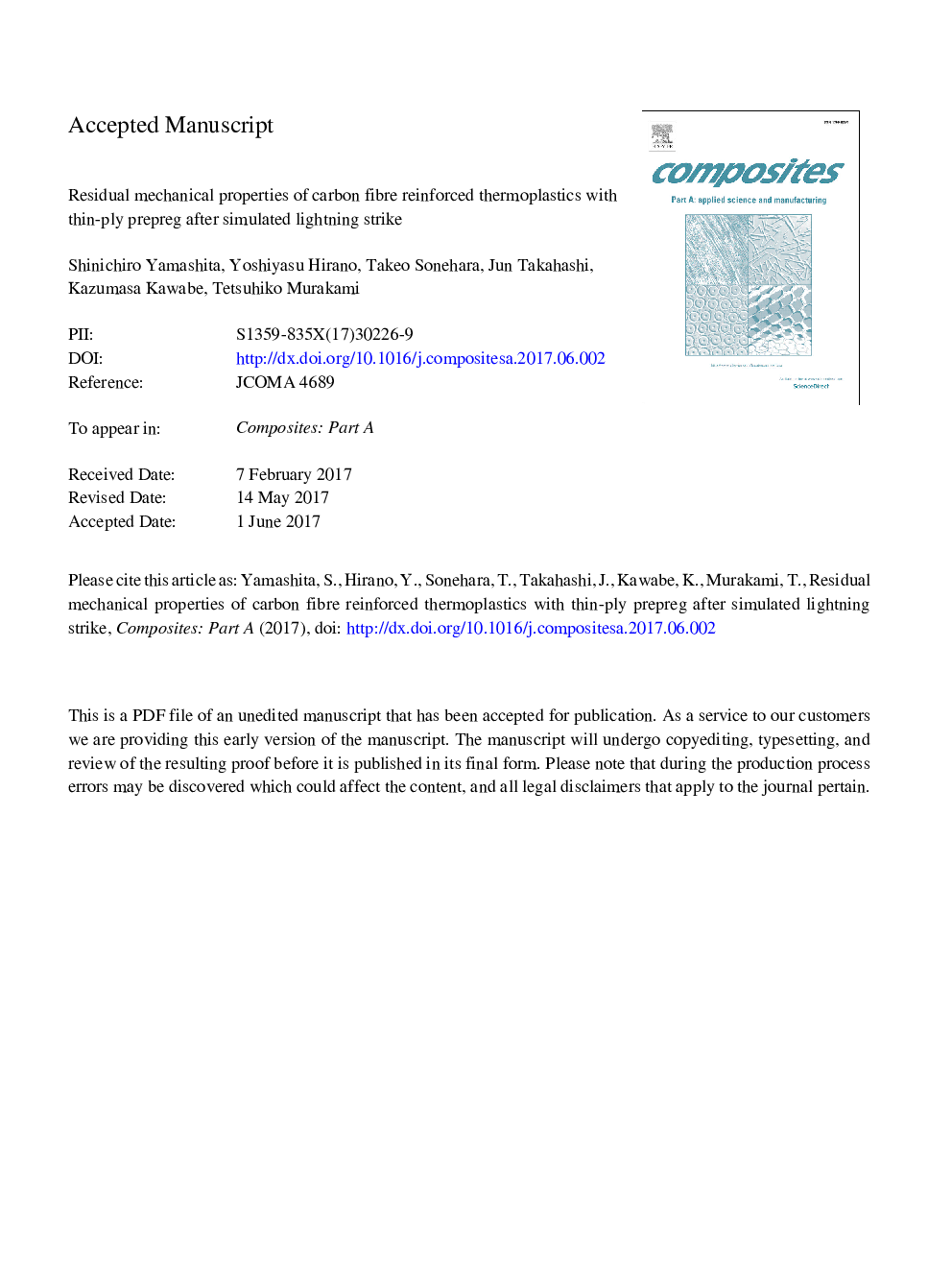| Article ID | Journal | Published Year | Pages | File Type |
|---|---|---|---|---|
| 5439399 | Composites Part A: Applied Science and Manufacturing | 2017 | 31 Pages |
Abstract
This study experimentally examined the residual mechanical properties of a carbon-fibre/polyamide-6 laminate and randomly-oriented carbon-fibre strand (ROS) thermoplastic composites with thin-ply prepreg after a simulated lightning strike, and compared the results with those of a carbon-fibre/epoxy laminate fabricated from thick-ply prepreg. The damage was characterized by visual inspection, ultrasonic scanning, and optical microscopy. The residual mechanical properties were evaluated using a four-point flexural test. The flexural strength of the carbon-fibre/epoxy laminate was considerably reduced due to delamination, whereas the carbon-fibre/polyamide-6 laminate with a thin-ply prepreg exhibited improved retention of flexural properties. Lightning damage to ROS composites was spread over larger areas and depths, while being scattered and spotted, consistent with superior retention of flexural strength. Moreover, the flexural properties of intact and damaged ROS composites were improved by thin-ply prepreg. These results suggest that the application of thin-ply prepreg to thermoplastics affords composites with superior mechanical properties and lightning resistance.
Keywords
Related Topics
Physical Sciences and Engineering
Materials Science
Ceramics and Composites
Authors
Shinichiro Yamashita, Yoshiyasu Hirano, Takeo Sonehara, Jun Takahashi, Kazumasa Kawabe, Tetsuhiko Murakami,
